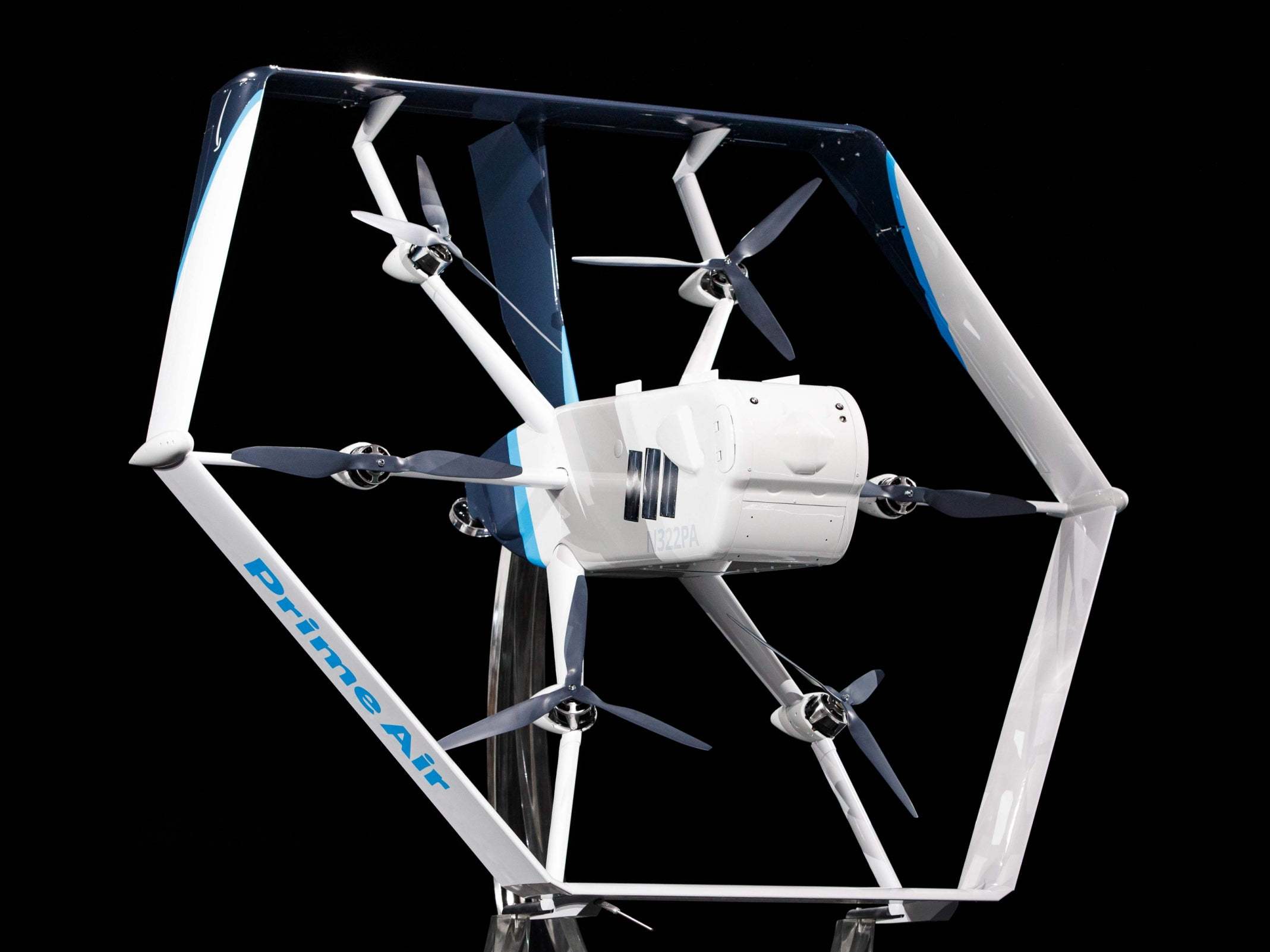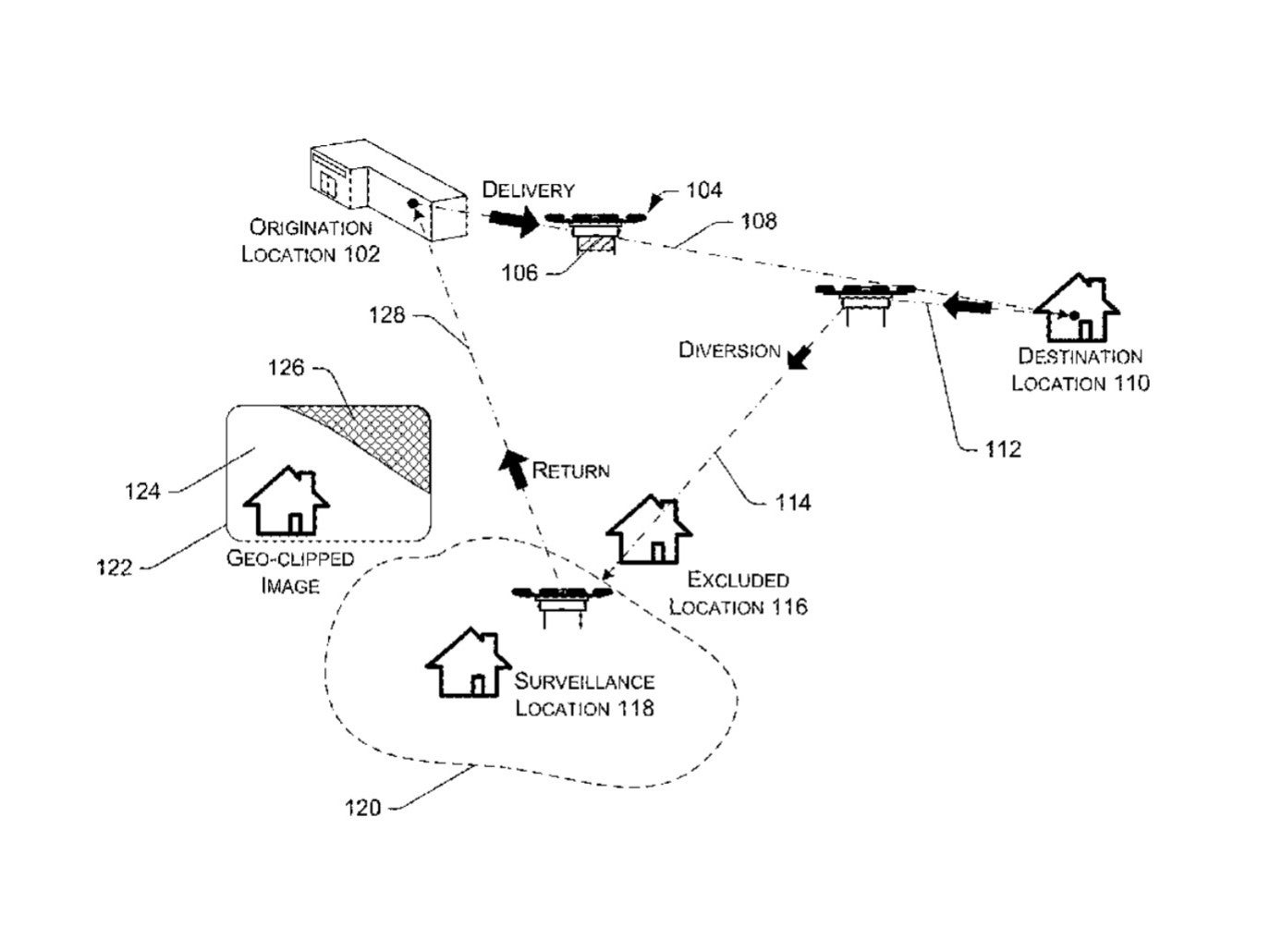Amazon delivery drones could be used to spy on homes, new patent reveals
Unmanned aerial vehicle would act as much more than just flying CCTV cameras, with thermal imaging, surveying lasers and chemical sensors

Amazon drones could be used to perform surveillance operations when not delivering packages, according to a patent filed by the online retail giant.
The "Unmanned aerial vehicle based surveillance as a service" patent, which has been approved by the United States Patent and Trademark Office (USPTO), could allow Amazon customers in the future to subscribe to weekly, daily or hourly fly-bys of a chosen location.
An array of cameras and sensors would potentially allow the drones to act as much more than just a flying CCTV camera, with thermal imaging, surveying lasers and chemical sensors among the functions suggested in the patent.
"The delivery of a package using an unmanned aerial vehicle (UAV) may include performing a surveillance action at a property of an authorised party," states the patent, which was approved by the USPTO on 18 June.
"The surveillance action may include imaging the property, and may be performed before or after the package is delivered."
Amazon did not give any indication of when such a surveillance service might be offered to customers, though it would likely be several years if it happens at all.
"Patents take multiple years to receive and do not necessarily reflect our current product roadmap," an Amazon spokesperson told The Independent.
Potential privacy issues with the system are addressed in the patent, with one solution involving the removal or obscuring of images gathered of any locations not associated with the approved property.
The Amazon spokesperson added: "We take our customer privacy very seriously."

Amazon revealed at its re:MARS conference earlier this month that it plans to launch self-piloted delivery drones in the coming months.
The fully electric drones would be capable of lasting 30 minutes between charges, allowing them to fly up to 15 miles (24km) to deliver lightweight goods like books and toiletries.
Concerns about noise and safety have frequently been raised, but the technology giant has said its delivery drones would use computer vision and machine learning to detect and avoid people and obstacles.
"From paragliders to power lines to a corgi in the backyard, the brain of the drone has safety covered," said Jeff Wilke, who oversees Amazon's online retail business.
Mr Wilke said the technology is ready to roll out but Amazon is seeking approval from regulatory agencies. "We expect to do it in months," he said.
Join our commenting forum
Join thought-provoking conversations, follow other Independent readers and see their replies
Comments